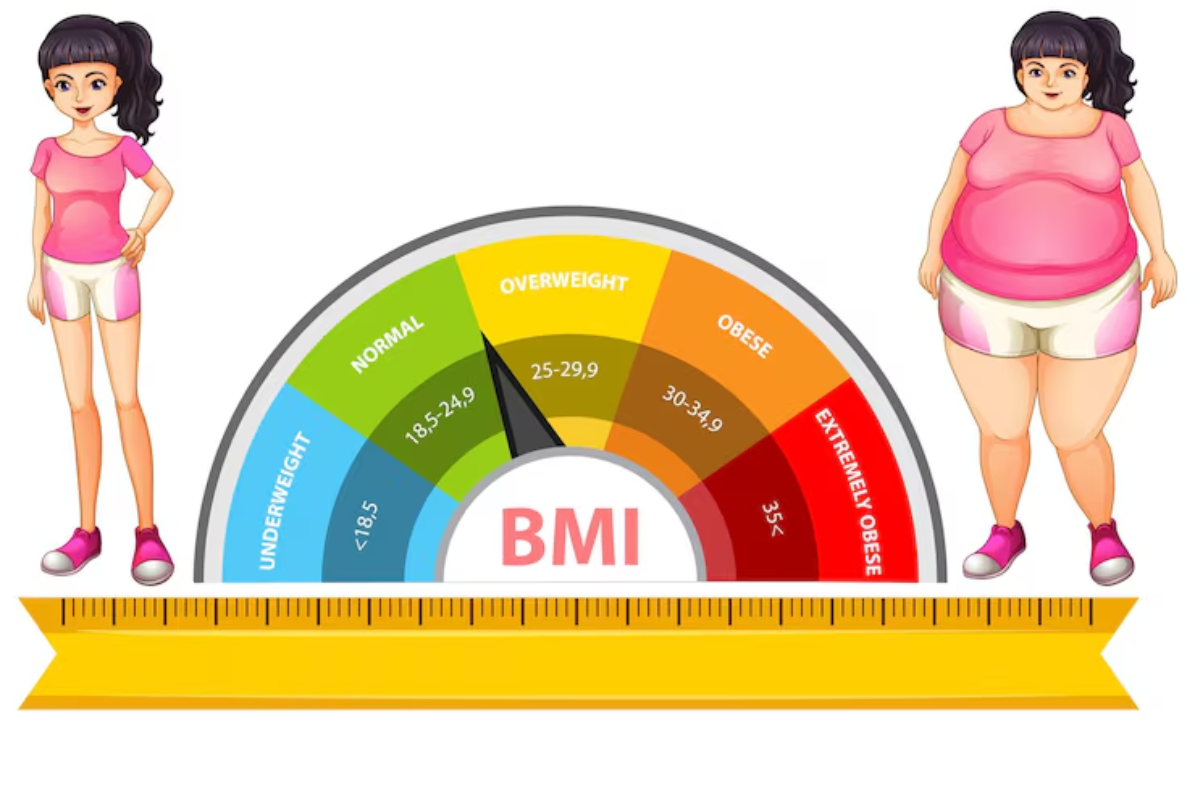When starting a weight loss journey, many people ask the same question: how much weight can you lose in a month? The answer depends on a few different things, like your starting point, how you eat, how active you are, and how consistent you stay. This article breaks down what you can realistically expect to lose in 30 days, in a healthy and sustainable way.
Weight loss is not about overnight change. While it may be tempting to aim for quick results, focusing on slow and steady progress leads to better long-term success. In this guide, we will look at the factors that impact monthly weight loss, how to set realistic goals, and what healthy weight loss looks like over four weeks.
Understanding Healthy Weight Loss
Why quick results aren’t always better?
Rapid weight loss might seem exciting at first, but it often comes with problems. Losing weight too fast can lead to muscle loss, tiredness, mood swings, and even a slower metabolism. Many quick-fix plans also cause people to gain the weight back once they stop. The keyword “how much weight can you lose in a month” becomes less helpful if the results don’t last.
Healthy weight loss allows your body to adjust at a steady pace. This gives your muscles time to stay strong, helps your body burn fat instead of muscle, and keeps your energy levels more stable. Most health experts agree that a slower pace is not only safer but also easier to maintain.
The role of body type and starting weight
Your starting weight plays a big part in how much you can lose. People who have more weight to lose may see faster results at the beginning, simply because their bodies burn more calories in daily activity. Body type, genetics, age, and metabolism also matter.
Someone who has been inactive for a while might notice quicker early progress once they begin moving more and eating better. On the other hand, a person who is already closer to their goal weight may lose more slowly. This doesn’t mean something is wrong—it’s just part of the process.
Factors That Influence Monthly Weight Loss
Diet and calorie intake
The number of calories you eat versus the number you burn affects weight loss directly. If you eat fewer calories than your body needs, you’ll start to lose weight. This is known as a calorie deficit. Eating balanced meals with the right portions helps maintain a steady pace of fat loss.
However, cutting too many calories too quickly can backfire. It might cause fatigue or even lead your body to hold onto fat. A steady, mild deficit helps your body adjust safely. Most experts suggest reducing daily intake by 500 to 750 calories for healthy results.
Physical activity level
How much you move in a day also plays a big role. Exercise not only helps burn calories but also supports your heart, muscles, and mental health. Regular physical activity boosts weight loss and helps your body feel stronger overall.
You don’t need to overdo it. Simple things like walking, swimming, or using a bike can support your goals. Mixing cardio and strength training can help improve results over time.
Sleep and stress management
Many people don’t realize how much sleep and stress affect weight. Poor sleep can slow your metabolism and increase cravings, especially for sugary foods. Stress can lead to emotional eating or hormonal changes that slow progress.
Managing stress and getting enough rest gives your body the support it needs. It may not seem like a big deal, but these areas often hold people back without them realizing it.
Setting Realistic Weight Loss Goals
What most experts recommend?
Health professionals often say that losing 1 to 2 pounds per week is a safe and sustainable goal. Over a month, that adds up to about 4 to 8 pounds. This may not sound like a lot, but small steps add up fast. In three months, that could mean 12 to 24 pounds lost.
This pace gives your body time to adjust, reduces the risk of muscle loss, and makes it easier to keep the weight off long-term. Quick results might grab attention, but steady progress is where real change happens.
Why gradual change is more effective?
When you lose weight slowly, you build better habits. You learn what foods keep you full, what workouts you enjoy, and how to stay consistent. Fast weight loss usually skips this part, which is why people often regain the weight.
Your body also adapts more comfortably. This makes it easier to stay motivated, avoid burnout, and stay healthy while making changes. Gradual progress keeps you moving forward in a way that feels doable.
Sample Weekly Weight Loss Averages
1 to 2 pounds per week: What it looks like over a month
Losing 1 to 2 pounds a week may not sound dramatic, but it’s the gold standard for healthy results. If you stay consistent with diet and exercise, you can expect to lose about 4 to 8 pounds in a month.
This is a good range for most people asking, “how much weight can you lose in a month?” because it balances results with sustainability. At this pace, your body is burning fat, not muscle, and you’re learning the habits that support long-term success.
When more than 2 pounds per week might be possible?
In some cases, people might lose more than 2 pounds per week. This is usually true for those who have a higher starting weight, or for people making big changes to their lifestyle. The first few weeks often show quicker progress due to water loss and early shifts in eating habits.
Still, faster weight loss isn’t always better. It’s important to watch how your body feels and stay focused on building habits rather than chasing fast numbers.
Diet Approaches That Support Monthly Weight Loss
Balanced meals vs. crash diets
Balanced meals are the key to long-term weight loss. A mix of protein, fiber, healthy fats, and whole grains keeps you full and energized. Crash diets, on the other hand, often cut too many calories or remove entire food groups, leading to hunger, cravings, and quick rebounds.
Eating well doesn’t have to be complicated. Focus on simple, whole foods that support your goals without making you feel deprived. You’re more likely to stay on track when your meals feel satisfying and enjoyable.
Tracking progress without obsession
While tracking food or weight can help, it’s important not to become obsessed. Use tracking as a tool—not a punishment. Progress isn’t just about the number on the scale. Pay attention to energy levels, mood, sleep, and how your clothes fit. These are signs that your body is changing, even when the scale is slow.
Exercise and Its Role in Monthly Results
Cardio vs. strength training
Both cardio and strength training help with weight loss, but they work in different ways. Cardio burns more calories during the workout. Walking, running, dancing, or swimming are great examples.
Strength training helps build muscle, which boosts metabolism and improves your shape over time. It also helps protect against muscle loss as you lose weight. Mixing both types of exercise gives the best results.
How often to work out for visible change?
You don’t need to spend hours at the gym. About 30 to 60 minutes of movement most days of the week is enough to see results. Start slow, build up your routine, and stay consistent. Small efforts add up quickly when done regularly.
When to Seek Help or Support?
Plateaus or slow progress
Hitting a plateau is common. You may follow your plan and suddenly stop seeing changes. This doesn’t mean you’re doing anything wrong. It often means your body is adjusting. A few small changes—like adjusting calories or adding a new type of workout—can help restart progress.
Signs you may need medical or nutritional guidance
If you’re doing your best but not seeing results, or if you feel tired, dizzy, or weak, it might be time to speak to a doctor or dietitian. Sometimes, medical conditions or nutrient needs affect weight. A health expert can help you adjust your plan safely.
Support also keeps you motivated. Whether it’s a friend, coach, or online group, having people cheer you on makes the process easier.
Conclusion
So, how much weight can you lose in a month? For most people, the safe and healthy answer is 4 to 8 pounds. This range allows your body to adjust, helps you build lasting habits, and keeps your energy strong.
Weight loss is more than a number on a scale. It’s about creating a healthier lifestyle you can maintain. Slow, steady change is the best path toward real results. Listen to your body, stay consistent, and celebrate every small step. In the end, lasting success comes from progress you can stick with—not from shortcuts.
FAQs
1. Can I lose 10 pounds in a month safely?
It’s possible for some people, especially with a higher starting weight or major lifestyle changes. However, most experts say 4 to 8 pounds is safer and more sustainable.
2. How much weight can you lose in a month with exercise only?
If your diet stays the same, you may lose a few pounds through exercise alone. But combining exercise with healthy eating leads to better results.
3. What’s the average monthly weight loss on a calorie deficit?
A calorie deficit of 500 to 750 per day usually leads to 1 to 2 pounds of weight loss per week, or 4 to 8 pounds per month.
4. Is it possible to lose weight fast without losing muscle?
Yes, but it takes careful planning. Eating enough protein and doing strength training can help protect muscle during weight loss.
My name is Mustafa, and I have been blogging for over 5 years. I am passionate about sharing complete, accurate, and helpful information with my readers. Along with managing content on The Matcha Read, I also contribute blog posts to premium websites. My goal is to provide valuable insights in a clear and easy-to-understand way, so every reader walks away with useful knowledge.










